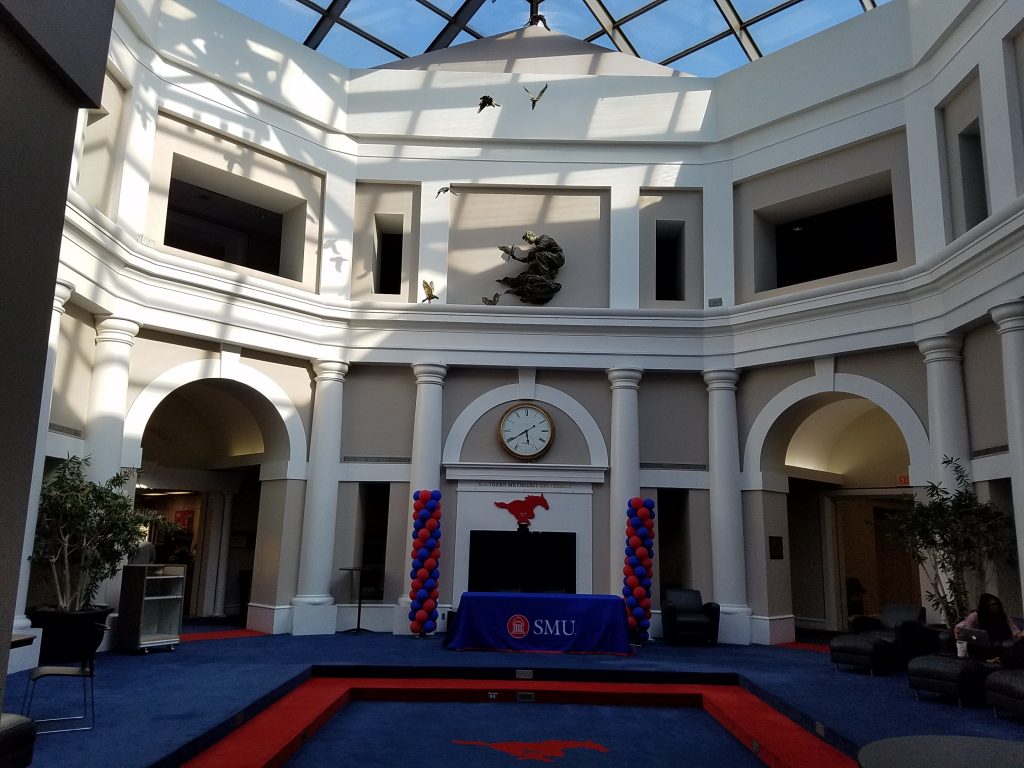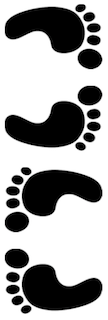Hughes-Trigg Student Center Interior
The study in symmetry continues inside the Hughes-Trigg Student Center, this time providing an excellent illustration of another important type, rotational symmetry. Check out the central gallery of the building.  If you stand in the center of the room (right on top of the ubiquitous stallion), pick any direction and memorize what you see, and then turn ninety degrees, you will see an almost identical view. The arches, the moldings, the columns, the well in the center of the floor, the beams in the glass roof — all appear exactly the same when rotated a quarter turn. Only decorative details such as the sculpture of the boy with birds, or practical considerations like what you can see down each hallway, break the symmetry.
If you stand in the center of the room (right on top of the ubiquitous stallion), pick any direction and memorize what you see, and then turn ninety degrees, you will see an almost identical view. The arches, the moldings, the columns, the well in the center of the floor, the beams in the glass roof — all appear exactly the same when rotated a quarter turn. Only decorative details such as the sculpture of the boy with birds, or practical considerations like what you can see down each hallway, break the symmetry.
Given that the overall shape of the room is an octagon, you might think that the room also has an element of eight-fold, rather than just four-fold, rotational symmetry. But if you look closely, you will see that alternating walls are shorter and longer, so that the scene really does change in a fundamental way if you rotate only one eighth of a turn.
This room is also a good location to compare and contrast rotational versus mirror symmetry, because there are some elements of the room that obey one versus the other. For example, the plants you can see in the photo above are placed in a mirror-symmetric way about an imaginary vertical plane right through the clock and the stallion on the wall, as are the two columns of balloons (which may not generally be there). A good activity is to list different features of the room and classify whether they are compatible with mirror symmetry, rotational symmetry, both, or neither.

